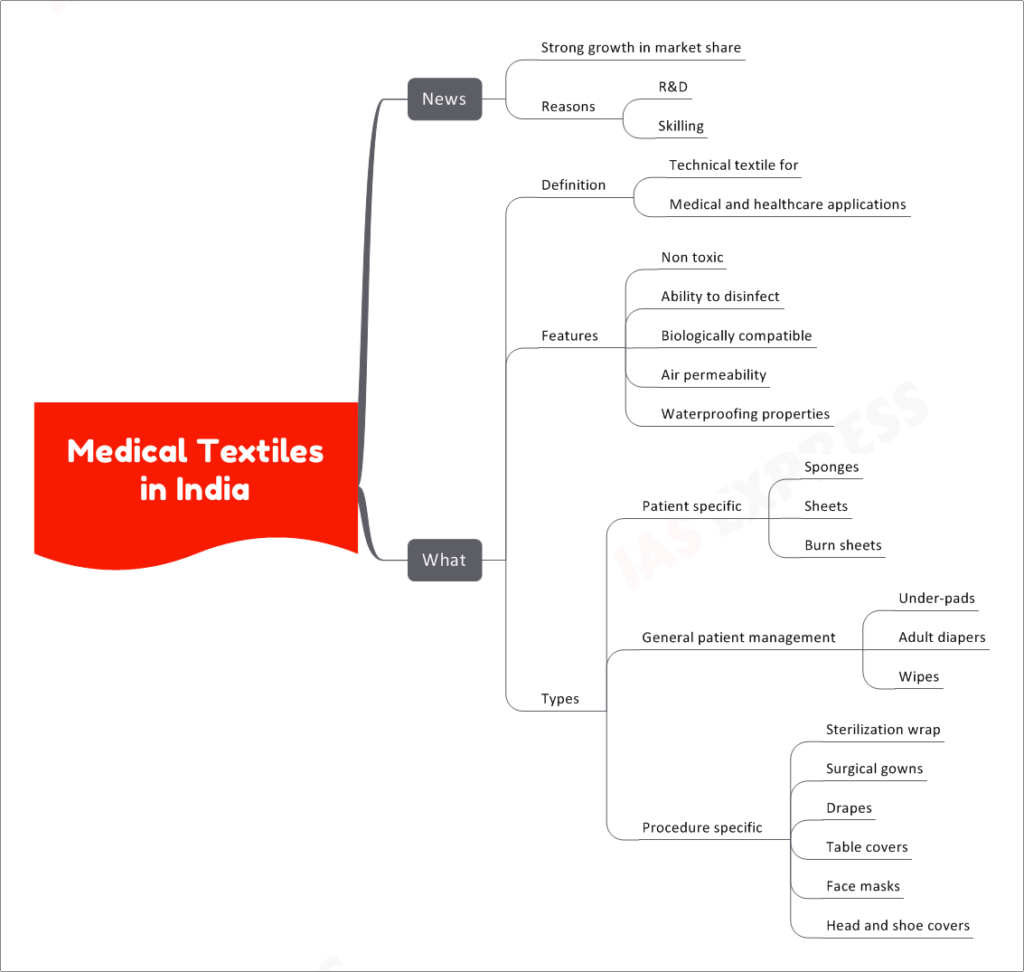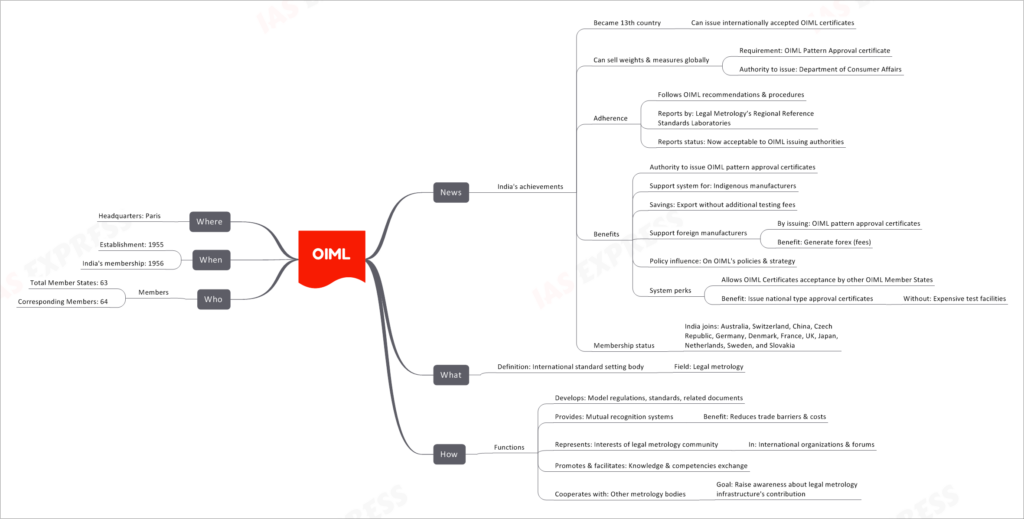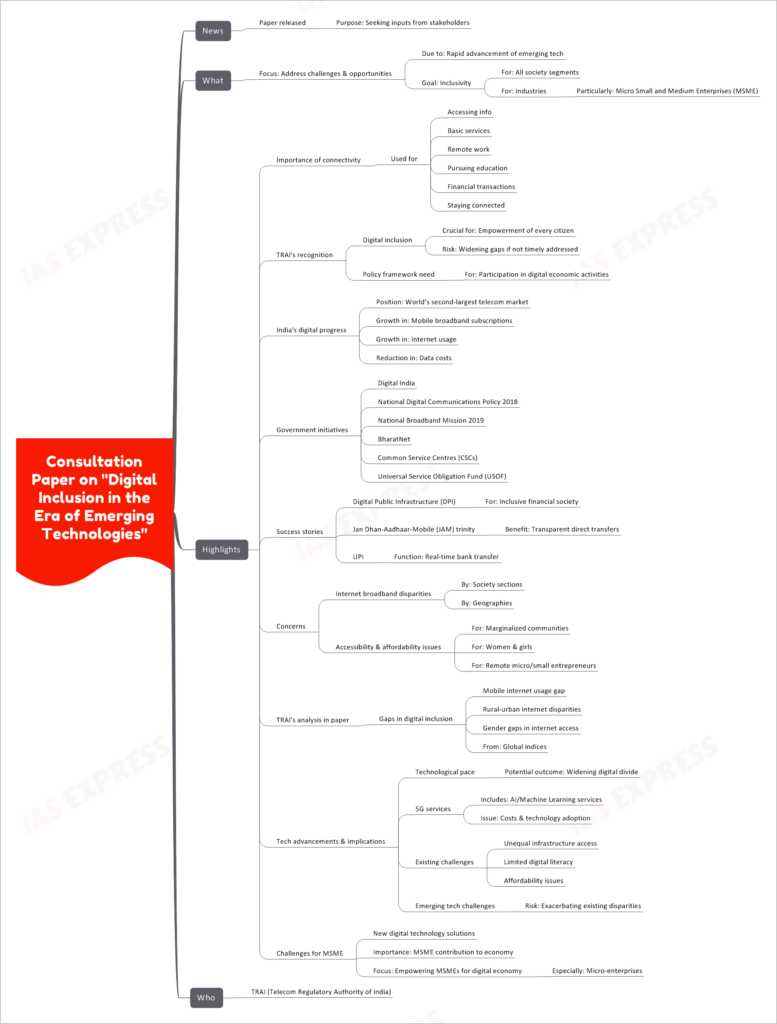[Newsbits] 14.09.2023

Medical Textiles in India
The medical textile industry in India has witnessed robust growth, gaining a significant market share in recent years. Several factors have contributed to this growth, primarily centered around research and development (R&D) efforts and the emphasis on skill development within the sector.
What is Medical Textile?
Definition: Medical textile refers to technical textiles designed for medical and healthcare applications. These textiles are specifically engineered to meet stringent requirements in the medical field, offering unique features and benefits.
Key Features of Medical Textiles
- Non-Toxic: Medical textiles are manufactured to be non-toxic, ensuring they are safe for use in healthcare settings without posing any harm to patients.
- Disinfection Ability: They possess the capability to be effectively disinfected, maintaining a hygienic environment in medical facilities.
- Biologically Compatible: Medical textiles are biologically compatible, meaning they are well-suited for contact with the human body, minimizing the risk of adverse reactions.
- Air Permeability: These textiles often have air permeability, allowing for comfortable and breathable applications, especially in garments and drapes.
- Waterproofing Properties: Some medical textiles are designed to be waterproof, preventing liquid penetration and maintaining cleanliness.
Types of Medical Textiles
Medical textiles encompass various types tailored for specific healthcare purposes, each with its unique characteristics and applications:
1. Patient Specific
- Sponges: Used for wound care, these textiles are highly absorbent and help maintain a sterile environment.
- Sheets: Bed sheets in healthcare settings need to be durable, comfortable, and easy to clean.
- Burn Sheets: These specialized sheets are designed for burn patients, providing a gentle and sterile surface.
2. General Patient Management
- Under-Pads: These absorbent pads are placed under patients to protect bedding and maintain hygiene.
- Adult Diapers: Essential for incontinence care, adult diapers offer comfort and leakage protection.
- Wipes: Medical wipes are designed for various purposes, from cleaning wounds to sanitizing surfaces.
3. Procedure Specific
- Sterilization Wrap: Used to maintain the sterility of medical instruments and equipment during storage and transportation.
- Surgical Gowns: These gowns are worn by medical professionals to maintain a sterile environment during surgeries.
- Drapes: Medical drapes create a barrier, preventing contamination during medical procedures.
- Table Covers: These covers protect surgical tables from contamination and facilitate easy cleaning.
- Face Masks: Essential for infection control, face masks are designed for medical professionals and patients alike.
- Head and Shoe Covers: These protective covers prevent the spread of contaminants in medical settings.
The variety of medical textiles available is a testament to the versatility and innovation within the industry, catering to the diverse needs of the healthcare sector.
Annual Licensing Policy for Opium Poppy
- Crop Year 2023-24: The Annual Licensing Policy for Opium Poppy is a policy announced by the Government of India every year, detailing the regulations and requirements for opium poppy cultivation during the specific crop year.
- Prescriptions: This policy includes various prescriptions such as the minimum qualifying yield, maximum cultivation area, maximum benefit for farmers, and more.
Highlights of the Policy
- Increased Licenses: The policy anticipates granting licenses to 1.12 lakh farmers, which is 27,000 more than the previous crop year.
- Distribution: The licenses will be distributed across different states, with the majority going to Madhya Pradesh (54,500), followed by Rajasthan (47,000), and Uttar Pradesh (10,500).
- Retention of Licenses: Existing opium cultivators with an average yield of Morphine (MQY-M) ≥ 4.2 kg/ha will retain their licenses.
- CPS-Based Method: Other opium gum cultivators with morphine content yields ranging from 3.0 to 4.2 kg/ha are eligible for a CPS-based (Centralized Procurement System) method with a five-year license validity.
- Continuity for CPS-based Farmers: All CPS-based farmers from the previous year will continue with CPS-based cultivation for the current year.
- Relaxation in License Conditions: General license conditions have been relaxed to increase farmer coverage, promoting opium poppy cultivation.
Significance of the Policy
- Increased Licenses: The policy represents a significant increase, with 1.12 lakh licenses, which is 2.5 times the average number of licenses granted during the five-year period ending in 2014-15.
- Objective: The primary objective of the policy is to meet the rising demand for pharmaceutical preparations, both domestically and internationally.
- Alkaloid Production: It aims to ensure that alkaloid production from opium poppy meets domestic demand and fulfills Indian export requirements.
Where Does Opium Poppy Cultivation Occur?
- States: Opium poppy cultivation is restricted to government-notified tracts in states such as Madhya Pradesh, Rajasthan, and Uttar Pradesh.
- Major Cultivation Areas: Major cultivation areas include Mandsaur in Madhya Pradesh and Chittorgarh and Jhalawar in Rajasthan.
When Was the Licensing System Initiated?
- Initiation: The licensing system for opium poppy cultivation was initiated in the year 2020-21 and has been expanded since then.
Key Facts About Central Government's Measures
- Augmented Capacity: The Central Government has augmented the capacity of alkaloid factories to meet the demand for alkaloids derived from opium poppy.
- Good Management Practices: Good Management Practices are being adopted to ensure responsible cultivation and processing.
- Private Sector Engagement: The government has engaged with the private sector for opium gum and poppy straw processing, enhancing the efficiency of the supply chain.
- Expansion Plans: There is a plan to expand licensing for unlanced poppy cultivation, further boosting production.
- New Unit: A 100MT capacity unit for Concentrate of Poppy Straw is being set up on a Public-Private Partnership (PPP) basis with the aim of meeting domestic demand and boosting exports.
OIML
In recent news, India has achieved significant milestones in the realm of legal metrology by becoming the 13th country to issue internationally accepted OIML (International Organization of Legal Metrology) certificates. This achievement allows India to sell weights and measures globally, offering substantial benefits to both indigenous and foreign manufacturers. This article explores the role and functions of OIML, India's achievements, and the broader implications of its membership in this esteemed organization.
India's Achievements in OIML
Internationally Accepted Certificates
- 13th Country: India's membership in OIML now enables it to issue internationally accepted OIML certificates.
- Global Sales: With this recognition, India gains the authority to sell weights and measures globally, facilitating international trade.
- OIML Pattern Approval Certificate: The Department of Consumer Affairs in India has been granted the authority to issue OIML Pattern Approval certificates, a prerequisite for global sales.
- Adherence to OIML Recommendations: India follows OIML recommendations and procedures, ensuring adherence to international metrology standards.
- Reports by Regional Reference Standards Laboratories: Reports generated by Legal Metrology's Regional Reference Standards Laboratories in India are now acceptable to OIML issuing authorities.
Benefits of India's OIML Membership
- Support for Indigenous Manufacturers: India's authority to issue OIML Pattern Approval certificates provides crucial support to indigenous manufacturers by eliminating the need for additional testing fees.
- Support for Foreign Manufacturers: India can now issue OIML Pattern Approval certificates to foreign manufacturers, generating foreign exchange revenue through fees.
- Influence on OIML Policies: India's membership allows it to influence OIML's policies and strategies, contributing to the development of international metrology standards.
- System Perks: India's membership enables OIML certificates issued in the country to be accepted by other OIML Member States. This facilitates the issuance of national type approval certificates without the need for expensive test facilities.
Membership Status
- Distinguished Company: India joins a select group of countries, including Australia, Switzerland, China, the Czech Republic, Germany, Denmark, France, the UK, Japan, the Netherlands, Sweden, and Slovakia, as a member of OIML.
What is OIML?
Definition
- International Standard-Setting Body: OIML is an international organization that sets standards in the field of legal metrology.
How OIML Functions
- Developing Standards: OIML plays a crucial role in developing model regulations, standards, and related documents in the field of legal metrology.
- Mutual Recognition Systems: OIML provides mutual recognition systems that reduce trade barriers and costs by ensuring that measurements made in one country are recognized in another.
- Representation: OIML represents the interests of the legal metrology community in international organizations and forums.
- Promoting Knowledge Exchange: OIML promotes and facilitates the exchange of knowledge and competencies among its members.
- Cooperation with Metrology Bodies: OIML cooperates with other metrology bodies, aiming to raise awareness about the contributions of legal metrology infrastructure.
Who Are OIML Members?
- Total Member States: OIML currently has 63 member states.
- Corresponding Members: Additionally, there are 64 corresponding members associated with OIML.
When and Where Was OIML Established?
- Establishment: OIML was founded in 1955 to establish and maintain international standards in legal metrology.
- India's Membership: India became a member of OIML in 1956, marking the country's commitment to international metrology standards.
- Headquarters: OIML's headquarters are located in Paris, France, where it coordinates its global efforts in advancing legal metrology standards.
Consultation Paper on “Digital Inclusion in the Era of Emerging Technologies”
In recent news, the Telecom Regulatory Authority of India (TRAI) has released a Consultation Paper focusing on "Digital Inclusion in the Era of Emerging Technologies." This paper seeks inputs from stakeholders to address the challenges and opportunities arising from the rapid advancement of emerging technologies with the ultimate goal of achieving inclusivity for all segments of society, including industries, particularly Micro Small and Medium Enterprises (MSMEs).
The Importance of Digital Inclusion
The Role of Connectivity
- Access to Information: Digital inclusion is crucial as it enables individuals to access a wealth of information through the internet.
- Basic Services: It facilitates access to essential services such as healthcare, education, and government services.
- Remote Work and Education: In a digital age, it supports remote work and online education.
- Financial Transactions: It empowers individuals to conduct financial transactions online, fostering financial inclusion.
- Staying Connected: Digital inclusion ensures that people can stay connected with each other, especially in a fast-paced digital world.
TRAI's Recognition
- Empowerment: TRAI recognizes that digital inclusion is essential for the empowerment of every citizen.
- Risk of Gaps: Failing to address digital inclusion could lead to widening gaps in society.
- Policy Framework: There is a need for a robust policy framework to encourage participation in digital economic activities.
India's Digital Progress
- Telecom Market: India has positioned itself as the world's second-largest telecom market.
- Mobile Broadband: There has been significant growth in mobile broadband subscriptions.
- Internet Usage: The country has witnessed a surge in internet usage.
- Cost Reduction: The reduction in data costs has contributed to increased connectivity.
Government Initiatives
- Digital India: The government's flagship program aims to transform India into a digitally empowered society.
- National Digital Communications Policy 2018: This policy outlines the government's vision for the digital communications sector.
- National Broadband Mission 2019: Focused on providing affordable broadband access to all.
- BharatNet: A project to connect rural India with high-speed internet.
- Common Service Centres (CSCs): These centers provide digital services in rural areas.
- Universal Service Obligation Fund (USOF): Supports universal access to telecom services.
Success Stories
- Digital Public Infrastructure (DPI): DPI is essential for creating an inclusive financial society.
- Jan Dhan-Aadhaar-Mobile (JAM) Trinity: This initiative facilitates transparent direct transfers of government benefits.
- UPI (Unified Payments Interface): UPI enables real-time bank transfers, enhancing financial inclusion.
Concerns and Challenges
- Internet Broadband Disparities: Disparities exist in internet access among different sections of society and geographies.
- Accessibility and Affordability Issues: Marginalized communities, women and girls, and remote micro/small entrepreneurs face accessibility and affordability challenges.
TRAI's Analysis in the Paper
- Gaps in Digital Inclusion: The paper highlights disparities in mobile internet usage, rural-urban internet discrepancies, and gender gaps in internet access, drawing insights from global indices.
Technological Advancements and Implications
- Technological Pace: The rapid pace of technological advancement has the potential to widen the digital divide.
- 5G Services: The integration of AI and Machine Learning services into 5G raises issues related to costs and technology adoption.
- Existing Challenges: Challenges such as unequal infrastructure access, limited digital literacy, and affordability issues persist.
- Emerging Tech Challenges: The adoption of emerging technologies poses risks of exacerbating existing disparities.
Challenges for MSMEs
- New Digital Technology Solutions: MSMEs need to adapt to new digital technology solutions to stay competitive.
- Economic Contribution: The MSME sector plays a vital role in the Indian economy.
- Empowering MSMEs: The focus should be on empowering MSMEs, particularly micro-enterprises, to participate effectively in the digital economy.
Blossom Showers
Recent news has highlighted the impact of pre-monsoon rains, commonly known as "Blossom Showers" or "April Rains," on various agricultural activities, particularly coffee production in India. These early showers play a crucial role in the growth of crops like coffee and mangoes, with their absence leading to significant challenges in crop yield. In this article, we will delve into the details of blossom showers, their significance, timing, geographical distribution, and their impact on coffee production, including a global perspective.
News: Monsoon Deficit Affecting Coffee Production
- Monsoon Deficit: Blossom showers have gained attention due to a monsoon deficit in India, primarily affecting the southern state of Karnataka.
- Coffee Production Impact: The delayed blossom showers have caused a 20% drop in coffee production in Karnataka, a significant coffee-producing region.
What Are Blossom Showers?
- Aliases: Blossom showers are also known as "April Rains" or "Mango Showers" in different regions.
- Definition: These are pre-monsoon showers that occur before the arrival of the full-fledged monsoon season.
Significance for Agriculture
- Crucial for Coffee: Blossom showers are crucial for coffee cultivation as they stimulate the flowering and fruiting of coffee plants.
- Beneficial for Mangoes: Besides coffee, mango cultivation also benefits from these showers as they promote early fruiting and a good harvest.
Timing of Blossom Showers
- Time Frame: Blossom showers typically occur during the months of March to May.
Geographical Distribution
- In India: Blossom showers are particularly important for Indian agriculture, especially in states like Karnataka.
- Beyond India: Similar pre-monsoon showers are observed in countries like Cambodia and various other parts of South and Southeast Asia.
Key Facts
- Indian Coffee Production: India is a significant contributor to global coffee production, with Karnataka leading the way. It accounts for 70% of the country's coffee production.
- Global Coffee Production: Brazil is the global leader in coffee production, being the world's largest producer. Supply disruptions in Brazil can have a substantial impact on coffee prices worldwide, including in India.
Impact of Brazilian Coffee Production on Indian Prices
- Supply Disruptions: When Brazil faces issues in coffee production, it disrupts the global coffee supply chain.
- Price Increase: These disruptions often lead to increased coffee prices in India, affecting both producers and consumers.
If you like this post, please share your feedback in the comments section below so that we will upload more posts like this.





